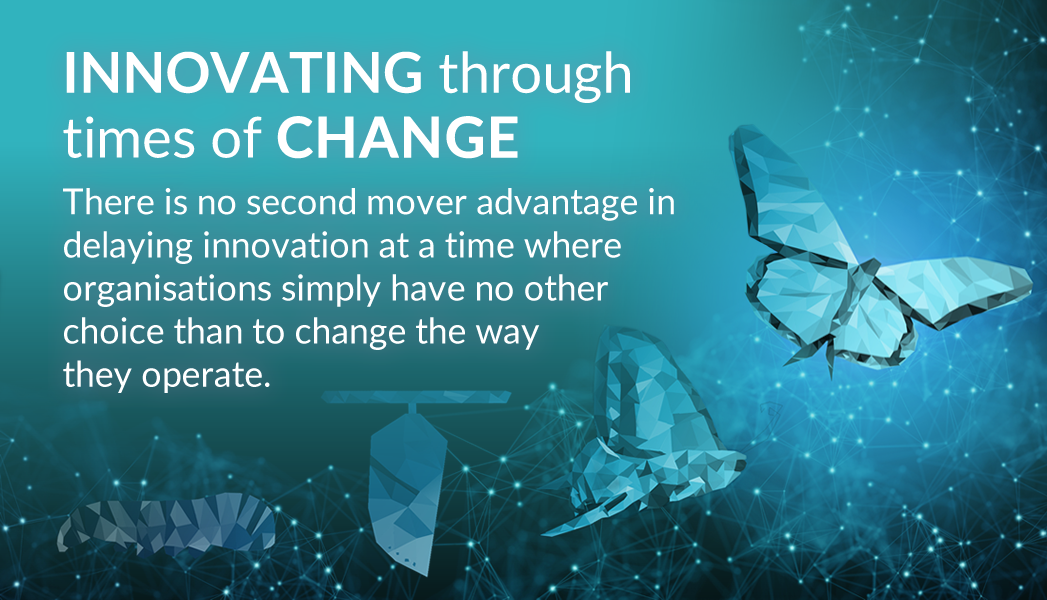
Following the advent of the internet, humans have witnessed a monumental shift to an online era, characterized by a period of hyperconnected economic growth. The entire private sector has gone digital. Then came the information era, where every business has started relying on data-driven decision-making. Now, searching these volumetric data and a vast amount of information from multiple enterprise systems for informed decisions and analytics becomes a challenge.
Information often resides in multiple repositories such as CRMs, ERPs, shared drives, SaaS applications, and legacy archives. To handle such growing data management and effectively search for fragmented information, enterprise search platforms (ESP) can come to the rescue.AI-powered ESPs can help enterprises search, access, and act on information from disparate systems through a single intelligence search interface. With effective operations management and information accessing capabilities via semantic understanding and knowledge graph technologies, enterprises can make corporate data actionable.
This article describes Enterprise Search Platforms (ESPs), their core capabilities, and key technological components. We will also gather insights on how AI can help ESPs in enhancing operations management. Then, we will understand how effective enterprise search can work as a catalyst in driving agility across private sector operations.
What are Enterprise Search Platforms (ESPs)?
Enterprise Search Platforms (ESPs) are collaborative technologies with features that enable enterprises to unify, access, and extract value from a diverse plus scattered digital ecosystem. Modern enterprise ecosystems store data in multiple locations, including databases, cloud storage, shared drives, and customer relationship management (CRM) systems. This data fragmentation creates information silos, hindering collaboration, innovation, and operational agility. ESPs address this challenge by providing a centralized, intelligent search interface that enables users to quickly, securely, and contextually discover and retrieve relevant information, regardless of its location.
These solutions and technologies work as connective tissues between multiple information and knowledge repositories. It helps businesses in managing various operations effectively, empowering knowledge workers to make informed decisions faster and improving the overall efficiency of business operations.ESPs are effective for fetching indexed structured and unstructured data, applying intelligent ranking algorithms, offering security over information, and delivering contextual and personalized results.Various sectors, such as financial services, healthcare, manufacturing, retail, e-commerce, and consultancy services, leverage ESPs to introduce agility into workflow.
Core Capabilities of Enterprise ESPs for Agile Operations
Enterprise Search Platforms (ESPs) have evolved from fundamental information retrieval systems into powerful strategic enablers of agility, driving faster, smarter, and more collaborative workflows in the private sector. These solutions come with numerous core capabilities to enhance information accessibility, streamline enterprise operations, and facilitate adaptive process workflows. Let us now explore these core capabilities one by one.
Unified Information Access: The primary capability of ESPs is to unify fragmented data stored across various enterprise systems, including cloud, servers, and local repositories. Since the private sectors operate on data scattered across ERPs, intranets, CRMs, shared drives, etc., for decision-making, ESPs offer a centralized framework for seamless and real-time access to data from various sources. PromptX can connect data spanning across emails, enterprise apps, cloud, servers, and other local repositories & make them accessible within seconds.
Intelligent and context-aware search: Modern ESPs are far more than an information searching tool. They interpret user needs, perform context-driven actions in real-time, and can understand semantic relationships. Rather than relying on heuristic search and keyword matching, they use AI and ML to understand user intent and natural language processing (NLP) to interpret search context.Numerous ESPs and enterprise search tools like PromptX offer deeper semantic search and conversational search mechanisms through AI-powered techniques.
Real-Time Indexing and Continuous Updates: Another core capability of modern ESPs is to offer agility by updating data accurately. Enterprise ESPs are powerful enough to deliver real-time indexing capabilities. It helps employees and users obtain updated information that is easy to search and discover. This feature works as a cornerstone of agile enterprise workflow. PromptX comes with a source-ranked retrieval feature and web content parsing for web indexing and instant information updates.
Secure Accessibility and Compliance: Apart from intelligent information gathering and unified access, enterprises use modern ESPs because they offer state-of-the-art data security through role-based and attribute-based access controls. ESPs integrate Identity and Access Management (IAM) systems to enforce granular permissions over scattered enterprise information. PromptX guarantees zero vendor lock-in, enabling companies to integrate different security solutions. It also offers fine-grained context permission and audit logs.
Advanced analytics and seamless integration: Modern ESPs do more than information fetching. They also provide rich analytics on user search behavior, content usage, and emerging trends.ESPs can fetch data from various internal and external sources due to the connectors and APIs of ESPs. They work seamlessly, embedded directly into daily workflows, and reduce tool-switching fatigue. Check out PromptX. Here you can see the different clouds, workspace solutions, and AI chatbots that it can integrate and work with.
Various Technologies used in Modern ESPs
Modern ESPs offer multi-layered technologies with cutting-edge algorithms and features. These technologies help to collect, process, understand, and deliver information intelligently. Since they work in tandem, it helps unify fragmented data sources, enhances search relevance, ensures security, and provides actionable insights in real-time.
Data ingestion layer and connector: Since enterprises store data in a wide array of systems, they need technologies like data connectors to crawl, extract, and synchronize various types of data, including unstructured, semi-structured, and structured data. Then, the data ingestion layer breaks down data silos and feeds a clean, standardized data flow into the search platform. Data connectors with which PromptX can seamlessly operate include MongoDB, Microsoft OneDrive, SharePoint, Google Drive, ChatGPT, Gemini, MS SharePoint, etc.
Indexing engine: Once all the data is ready, connected, and ingested, ESPs use an indexing algorithm to enable accurate and faster data retrieval. There, it uses the indexing engine that transforms raw data into searchable items through tokenization, stemming, lemmatization, and stop-word filtering algorithms. The engine also helps in faster lookup through vector indexes and inverted indexes. Document classification and auto summarization is also a part of the indexing engine.
Smart Query processing with NLU: Advanced searching mechanisms have outweighed traditional keyword-based searching. Modern ESPs integrate Natural Language Processing (NLP) and Natural Language Understanding (NLU) to understand intent, not just literal text. Tools like PromptX comes with features like traceable AI, deep semantic search, error and synonym handling, and conversation memory, all of which are possible because of AI and NLU technologies.In tools like PromptX, NLU, along with Machine Learning, also uses intent detection and fuzzy search for auto-suggestion and context-aware or role-aware data discovery.
Ranking and Relevance Engine: Irrelevant data and information can drag businesses to a loss. Therefore, the ranking and relevance engine uses scoring algorithms based on metadata, keyword matches, usage history, and user behavior to give relevant search results. Furthermore, with AI-enabled algorithms, it offers context signals & uses ML to improve ranking through feedback loops and demotion rules to make data business-centric, aligning with the business priorities.
Security, governance, and access control: Since not every enterprise’s information is for everyone, access control mechanisms should remain at the core of security, along with data encryption. ESPs integrate Identity and Access Management (IAM) solutions, applying role-based or attribute-based access control (RBAC/ABAC). It assures that the search results from ESPs respect data permissions, so users only see what they are authorized to access. It also ensures audit logging and compliance policies such as GDPR, HIPAA, ISO, etc.
Case Study
Let us assume a multinational firm with more than 1000 employees scattered across different countries. Obviously, customer data will reside in a CRM system and ERP platforms. Other campaign performance analytics will remain stored across shared drives and cloud dashboards. To create a new promotional campaign, the marketing team must retrieve data from each system manually, cross-reference insights, and coordinate with multiple departments.
That is where enterprises can deploy ESPs to unify these data silos under a single search interface. Team members can instantly retrieve campaign insights, inventory status, and customer segmentation data in real time, reducing search time from days to minutes and boosting operational agility.
Benefits of Enterprise Search Platforms
With organized search mechanisms for enterprise data, companies can seamlessly connect R&D, operations, and marketing to accelerate the product development cycle and the deployment phase, resulting in a faster time-to-market.
It also helps boost the experience of the internal customer service teams and the customer. ESPs help retrieve customer history instantly, offer knowledge-based articles and blogs, and other information related to any business’s product or service. It helps drop response time significantly.
With intelligent search mechanisms and context-aware search patterns, ESPs help businesses reduce operational costs. The ranking engine (for ranking web pages and knowledge content), vector search mechanism, semantic search layering, and automation for information retrieval increase workforce productivity.
Enterprises should opt for ESPs because they help enhance knowledge retention. ESPs capture, index (listing of info as per usefulness and other criteria), and make knowledge accessible. It ensures knowledge continuity, easier onboarding, and less dependence on tribal knowledge.
It increases easy and context-rich information access, enhancing the search usefulness rate and employee productivity.
Conclusion
We hope this article provided a crisp idea of what enterprise search platforms are and how they function as a catalyst across private sector operations. With ESPs, private firms and other sectors can accelerate decision-making, break down information silos, enhance cross-functional collaboration, and enable contextual intelligence. Some well-known ESPs, such as PromptX, support a hybrid work environment, featuring knowledge life cycle management, web and local document parsing, deduplication, metadata enrichment, and inline collaboration.
We are in a high-velocity information era, where lagging due to poor data and information can drag a business to a loss. Because of modern ESPs, enterprises can shift from traditional information searching to a federated search with a data-driven work culture. As AI, NLP, and semantic technologies advance, ESPs will evolve from simple search tools into intelligent copilots for the enterprise, anticipating needs, surfacing insights, and guiding decisions.









